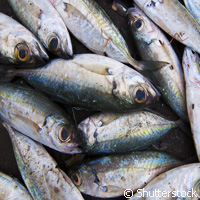Scientists use DNA technique to distinguish sardines from mackerel
Being able to distinguish sardines from horse mackerel has just got a little easier. Researchers in Spain used forensic mitochondrial DNA (deoxyribonucleic acid) species identification techniques to genetically differentiate between the fish, regardless if they are processed or canned. This latest technique will help experts to better monitor the exploitation of fish resources. This study was supported in part by a European Fisheries Fund (EFF) grant. The EFF contributes to the realisation of the Common Fisheries Policy (CFP) objectives, which seek the conservation and sustainable use of marine resources. The best way to tell species apart is to obtain DNA from the mitochondria (cell organelles). Experts say that cytochrome b, one of the DNA's components, is a genetic marker giving scientists the means to establish a relationship between genera and families. Forensic scientists, for instance, also use cytochrome b to identify animals such as cats that show up at crime scenes. Researchers from the National Association of Manufacturers of Canned Fish and Shellfish (ANFACO-CECOPESCA) decided to use the technique to genetically identify small pelagic (non-coastal) species and, in this case, sardines and horse mackerel. 'These molecular tools represent a great step forward for the sector, since they enable fisheries imports to be monitored and tracked, and also ensure they are correctly labelled,' SINC quotes Montserrat Espiñeira, a biologist at ANFACO-CECOPESCA and the lead researcher of the study, as saying. Thanks to this method, the researchers identified over 20 species from the sardine group, including Sardina, Clupea and Ilisha, and as many horse mackerel species like Caranx, Mullus and Trachurus from various locations around the globe. After they collected a sample of mitochondrial DNA from the fish, the researchers amplified a cytochrome b fragment and then conducted a phylogenetic (relating to or based on evolutionary development or history) analysis by obtaining a 'forensically informative nucleotide sequencing (FINS),' they say. The research on sardines was published in the journal European Food Research and Technology, and the horse mackerel study was presented in the Journal of Agricultural and Food Chemistry. Next on their list is the analysis of the distinct organoleptic, microbiological, physicochemical and nutritional properties of the species already evaluated. They also want to determine whether consumers would be interested in species that are currently unexploited. 'The end goal is to improve the management of fisheries resources and ensure they are sustainably exploited,' Ms Espiñeira says. The researchers are also working on making molecular identification methodologies possible in order to facilitate and accelerate the distinction of the most commercially valuable, small pelagic fish species: the European anchovy (Engraulis encrasicolus), the European sardine (Sardina pilchardus) and the main species of horse mackerel (Trachurus trachurus) in less than three hours.For more information, please visit: European Food Research and Technology: http://www.springerlink.com/content/100491/ Journal of Agricultural and Food Chemistry: http://pubs.acs.org/journal/jafcau National Association of Manufacturers of Canned Fish and Shellfish (ANFACO-CECOPESCA): http://www.anfaco.es/webs/webAnfaco/portales/anfaco/
Countries
Spain



